 A number of famous Business Schools in the UK and US such as MIT Sloan, NYU Stern and Imperial College have launched new programmes in business analytics. These courses have been nicknamed ‘Big Data finishing school’. Why might qualifications in this area be highly valued by firms?
A number of famous Business Schools in the UK and US such as MIT Sloan, NYU Stern and Imperial College have launched new programmes in business analytics. These courses have been nicknamed ‘Big Data finishing school’. Why might qualifications in this area be highly valued by firms?
Employees who have the skills to collect and process Big Data might help firms to successfully implement a pricing strategy that approaches first-degree price discrimination.
First-degree price discrimination is where the seller of a product is able to charge each consumer the maximum price he or she is prepared to pay for each unit of the product. Successfully implementing this type of pricing strategy could enable a firm to make more revenue. It might also lead to an increase in economic efficiency. However, the strategy might be opposed on equity grounds.
In reality, perfect price discrimination is more of a theoretical benchmark than a viable pricing strategy. Discovering the maximum amount each of its customers is willing to pay is an impossible task for a firm.
It may be possible for some sellers to implement a person-specific pricing strategy that approaches first-degree price discrimination. Firms may not be able to charge each customer the maximum amount they are willing to pay but they may be able to charge different prices that reflect customers’ different valuations of the product.
 How could a firm go about predicting how much each of its customers is willing to pay? Traditionally smaller sellers might try to ‘size up’ a customer through individual observation and negotiation. The clothes people wear, the cars they drive and their ethnicity/nationality might indicate something about their income. Second-hand car dealers and stall-holders often haggle with customers in an attempt to personalise pricing. The starting point of these negotiations will often be influenced by the visual observations made by the seller.
How could a firm go about predicting how much each of its customers is willing to pay? Traditionally smaller sellers might try to ‘size up’ a customer through individual observation and negotiation. The clothes people wear, the cars they drive and their ethnicity/nationality might indicate something about their income. Second-hand car dealers and stall-holders often haggle with customers in an attempt to personalise pricing. The starting point of these negotiations will often be influenced by the visual observations made by the seller.
The problem with this approach is that observation and negotiation is a time-consuming process. The extra costs involved might be greater than the extra revenue generated. This might be especially true for firms that sell a large volume of products. Just imagine how long it would take to shop at a supermarket if each customer had to haggle with a member of staff over each item in their supermarket trolley!! There is also the problem of designing compensation contracts for sales staff that provide appropriate incentives.
However the rise of e-commerce may lead to a very different trading environment. Whenever people use their smart phones, laptops and tablets to purchase goods, they are providing huge amounts of information (perhaps unconsciously) to the seller. This is known as Big Data. If this information can be effectively collected and processed then it could be used by the seller to predict different customers’ willingness to pay.
Some of this Big Data provides information similar to that observed by sellers in traditional off-line transactions. However, instead of visual clues observed by a salesperson, the firm is able to collect and process far greater quantities of information from the devices that people use.
For example, the Internet Protocol (IP) address could be used to identify the geographical location of the customer: i.e. do they live in a relatively affluent or socially deprived area? The operating system and browser might also indicate something about a buyer’s income and willingness to pay. The travel website, Orbitz, found that Apple users were 40 per cent more likely to book four or five star hotel rooms than customers who used Windows.
Perhaps the most controversial element to Big Data is the large amount of individual-level information that exists about the behaviour of customers. In particular, browsing histories can be used to find out (a) what types of goods people have viewed (b) how long they typically spend on-line and (c) their previous purchase history. This behavioural information might accurately predict price sensitivity and was never available in off-line transactions.
Interestingly, there has been very little evidence to date that firms are implementing personalised pricing on the internet. One possible explanation is that effective techniques to process the mass of available information have not been fully developed. This would help to explain the growth in business analytics courses offered by universities. PricewaterhouseCoopers recently announced its aim to recruit one thousand more data scientists over the next two years.
Another possible explanation is that firms fear a backlash from customers who are deeply opposed to this type of pricing. In a widely cited survey of consumers, 91% of the respondents believed that first-degree price discrimination was unfair.
Articles
Big data is coming for your purchase history – to charge you more money The Guardian, Anna Bernasek and DT Mongan (29/5/15)
Big data is an economic justice issue, not just a Privacy Problem The Huffington Post, Nathan Newman (16/5/15)
MIT’s $75,000 Big Data finishing school (and its many rivals) Financial Times, Adam Jones (20/3/16)
The Government’s consumer data watchdog New York Times, Natasha Singer (23/5/2015)
The economics of big data and differential pricing The Whitehouse blog, Jason Furman, Tim Simcoe (6/2/2015)
Questions
- Explain the difference between first- and third-degree price discrimination.
- Using an appropriate diagram, explain why perfect price discrimination might result in an economically more efficient outcome than uniform pricing.
- Draw a diagram to illustrate how a policy of first-degree price discrimination could lead to greater revenue but lower profits for a firm.
- Why would it be so difficult for a firm to discover the maximum amount each of its customers was willing to pay?
- Explain how the large amount of information on the individual behaviour of customers (so-called Big Data) could be used to predict differences in their willingness to pay.
- What factors might prevent a firm from successfully implementing a policy of personalised pricing?
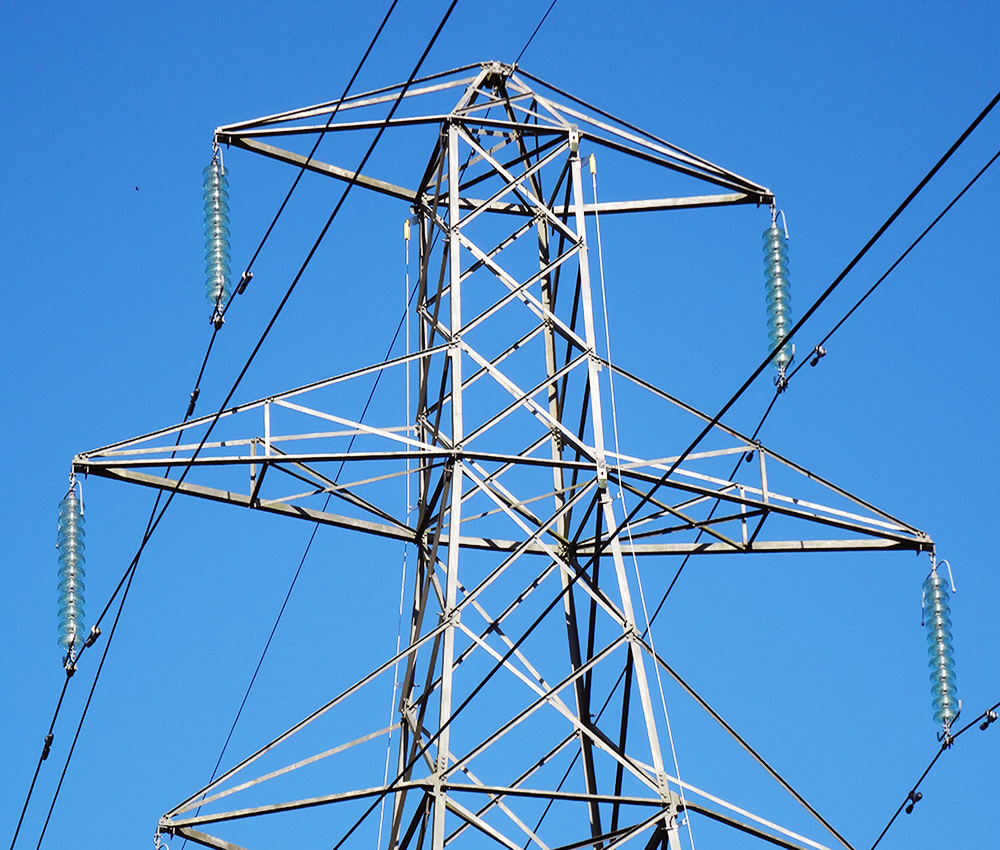 In June 2014, the Gas and Electricity Markets Authority (which governs the energy regulator, Ofgem) referred Great Britain’s retail and wholesale gas and electricity markets to the Competition and Markets Authority (CMA). The market is dominated by the ‘big six‘ energy companies (British Gas, EDF, E.ON, npower, Scottish Power and SSE) and Ofgem suspected that this oligopoly was distorting competition and leading to higher prices.
In June 2014, the Gas and Electricity Markets Authority (which governs the energy regulator, Ofgem) referred Great Britain’s retail and wholesale gas and electricity markets to the Competition and Markets Authority (CMA). The market is dominated by the ‘big six‘ energy companies (British Gas, EDF, E.ON, npower, Scottish Power and SSE) and Ofgem suspected that this oligopoly was distorting competition and leading to higher prices.
The CMA presented its report on 10 March 2016. It confirmed its preliminary findings of July and December 2015 “that there are features of the markets for the supply of energy in Great Britain that result in an adverse effect on competition”. It concludes that “the average customer could save over £300 by switching to a cheaper deal” and that “customers could have been paying about £1.7 billion a year more than they would in a competitive market”.
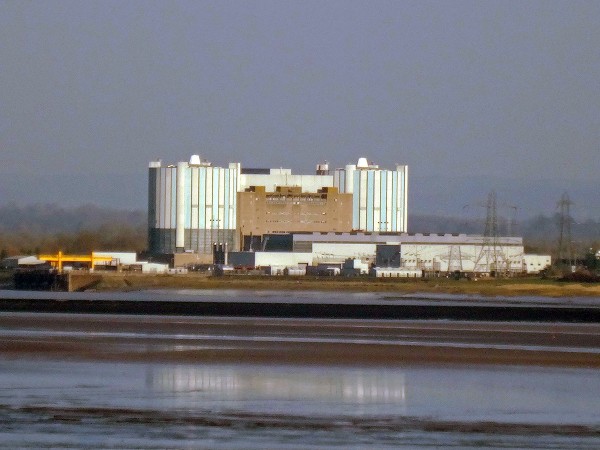 It made various recommendations to address the problem. These include “requiring the largest suppliers to provide fuller information on their financial performance” and strengthening the role of Ofgem.
It made various recommendations to address the problem. These include “requiring the largest suppliers to provide fuller information on their financial performance” and strengthening the role of Ofgem.
Also the CMA wants to encourage more people to switch to cheaper suppliers. At present, some 70% of the customers of the big six are on default standard variable tariffs, which are more expensive than other tariffs available. To address this problem, the CMA proposes the setting up of “an Ofgem-controlled database which will allow rival suppliers to contact domestic and microbusiness customers who have been stuck on their supplier’s default tariff for 3 years or more with better deals.”
Another area of concern for the CMA is the 4 million people (16% of customers) forced to have pre-payment meters. These tend to be customers with poor credit records, who also tend to be on low incomes. Such customers are paying more for their gas and electricity and yet have little opportunity to switch to cheaper alternatives. 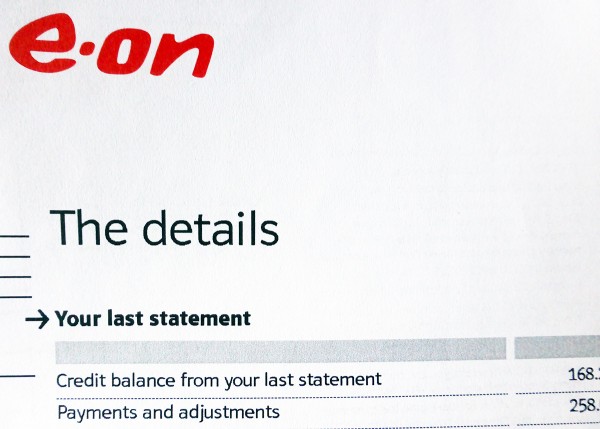 For these customers the CMA proposed imposing transitional price controls from no later than April 2017 until 2020. These would cut typical bills by some £80 to £90 per year. In the meantime, the CMA would seek to remove “restrictions on the ability of new suppliers to compete for prepayment customers and reduce barriers such as debt issues that make it difficult for such customers to switch”.
For these customers the CMA proposed imposing transitional price controls from no later than April 2017 until 2020. These would cut typical bills by some £80 to £90 per year. In the meantime, the CMA would seek to remove “restrictions on the ability of new suppliers to compete for prepayment customers and reduce barriers such as debt issues that make it difficult for such customers to switch”.
Despite trying to address the problem of lack of competition, consumer inertia and barriers to entry, the CMA has been criticised for not going further. It has also been criticised for the method it has chosen to help consumers switch to cheaper alternative suppliers and tariffs. The articles below look at these criticisms.
Podcast
 Competition and Markets Authority Energy Report BBC You and Yours (10/3/16)
Competition and Markets Authority Energy Report BBC You and Yours (10/3/16)
Articles
Millions could see cut in energy bills BBC News (10/3/16)
Shake-up of energy market could save customers millions, watchdog says The Telegraph, Jillian Ambrose (10/3/16)
UK watchdog divided over energy market reforms Financial Times, Kiran Stacey (10/3/16)
How the CMA energy inquiry affects you Which? (10/3/16)
UK watchdog accused of bowing to pressure from ‘big six’ energy suppliers The Guardian, Terry Macalister (10/3/16)
CMA documents
CMA sets out energy market changes CMA press release (10/3/16)
Energy Market Investigation: Summary of provisional remedies Competition and Markets Authority (10/3/16)
Questions
- Find out the market share of the ‘big six’ and whether this has changed over the past few years.
- What, if any, are the barriers to entry in the gas and electricity retail markets?
- Why are the big six able to charge customers some £300 per household more than would be the case if they were on the cheapest deal?
- What criticisms have been made of the CMA’s proposals?
- Discuss alternative proposals to those of the CMA for dealing with the problem of excessive prices of gas and electricity.
- Should Ofgem or another independent not-for-profit body be allowed to run its own price comparison and switching service? Would this be better than the CMA’s proposal for allowing competitors access to people’s energy usage after 3 years of being with the same company on its standard tariff and allowing them to contact these people?
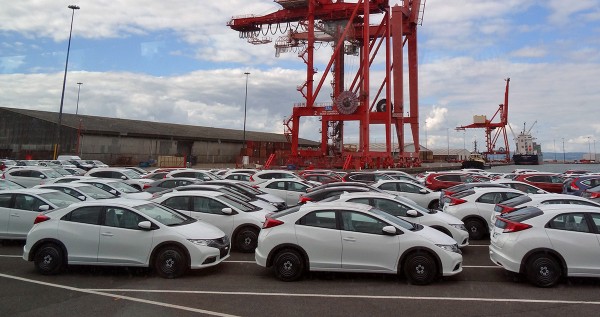 The European Commission has recently carried out a number of investigations into the various sectors of the industry that supplies parts to car manufacturers. Firms have been found guilty of engaging in anti-competitive practices in the supply of bearings, wire harnesses and the foam used in car seats. The latest completed case relates to firms that supply alternators and starters – both important components in a car engine.
The European Commission has recently carried out a number of investigations into the various sectors of the industry that supplies parts to car manufacturers. Firms have been found guilty of engaging in anti-competitive practices in the supply of bearings, wire harnesses and the foam used in car seats. The latest completed case relates to firms that supply alternators and starters – both important components in a car engine.
On January 27th the European Commission announced that it was imposing fines on some Japanese manufacturing companies. Melco (Mitsubishi Electric), Hitachi and Denso were found guilty of participating in a cartel between September 2004 and February 2010 that restricted competition in the supply alternators and starters to car manufacturers.
The Commission gathered evidence showing that senior managers in the three businesses held discussions about how to implement various anti-competitive practices. These either took place on the phone or at meetings in offices/restaurants. In particular the firms agreed:
|
|
| • |
to co-ordinate their responses to tenders issued by car manufacturers. This involved them agreeing on the price each firm would bid. |
| • |
to exchange commercially sensitive information about pricing and marketing strategies. |
| • |
which of them would supply each car manufacturer with alternators and starters. |
These activities are in breach of Article 101 of the Treaty on the Functioning of the European Union (2009). The European Commissioner for Competition, Margrethe Vestager, stated that:
“Today’s decision sanctions three car part producers whose collusion affected component costs for a number of car manufacturers selling cars in Europe, and ultimately European consumers buying them. If European consumers are affected by a cartel, the Commission will investigate it even if the cartel meetings took place outside of Europe”
The fines imposed on the three businesses were as follows:
– Denso €0
– Hitachi €26 860 000
– Melco €110 929 000
How are these fines calculated? When calculating the size of the fine to impose on a firm the Commission takes into account a number of factors. These include:
|
|
| • |
the size of its annual sales affected by the anti-competitive activities. |
| • |
its market share. |
| • |
the geographical area of its sales. |
| • |
how long it had taken part in the cartel. |
| • |
whether it had previously been found guilty of engaging in anti-competitive practices. |
| • |
if it initiated the cartel in the first place i.e. was it the ring leader? |
In this particular case the size of the fine imposed on both Hitachi and Melco was increased because they had both previously been found guilty of breaking EU competition rules.
If a member of the cartel comes forward with information that helps the Commission with its investigation, a reduction in the size of the fine can be applied under a provision called a Leniency Notice (2006). Timing as well as the quality of the information provided influences the size of this reduction. For example, only the first firm to come forward with relevant information can receive a reduction of up to 100% i.e. obtain full immunity. This explains how Denso could be found guilty but not have to pay a fine. (This firm’s initial approach to the Commission actually triggered the investigation.) Any subsequent firms that come forward with information receive smaller fine reductions. Hitachi and Melco received reductions of 30% and 28% respectively.
If a firm accepts the Commission’s decision a further reduction of up to 10% can be applied. This is called a Settlement Notice (2008). All three firms were awarded the full 10% discount in this case.
The European Commission is currently investigating the behaviour of firms that supply car thermal systems, seatbelts and exhaust systems.
Articles
Car parts price-fixing fines for Hitachi and Mitsubishi Electric BBC News 27/01/16
EU antitrust regulators to fine Japanese car part makers: sources Tech News 26/01/16
Mitsubishi Electric and Hitachi get $150 EU cartel fine Bloomberg 27/01/16
EU fines Mitsubishi Electric, Hitachi for car part cartel Reuters 27/1/16
Questions
- What market conditions would make the formation of a cartel more likely?
- Draw a diagram to illustrate the impact of a profit maximising cartel agreement on the price, output and profit in an industry.
- Draw a diagram to illustrate the incentive that each firm has to cheat on an agreed cartel price and output.
- Why did the European Commission introduce Settlement Notices?
 Recent reports in the media have included headlines such as “Sexist surcharge” and “Pink premium?” Various claims have been made that women pay significantly higher prices for similar products than men.
Recent reports in the media have included headlines such as “Sexist surcharge” and “Pink premium?” Various claims have been made that women pay significantly higher prices for similar products than men.
The Times newspaper recently published the results from an investigation it carried out on the prices of hundreds of similar products that were marketed at both men and women. The study found that those products marketed at women cost 37% more on average than similar versions that were marketed at men. Examples included:
- Disposable razors: Tesco priced a packet of five of its own-brand disposable razors for women at £1. The key characteristic that targeted the razors at female customers was the colour – they were pink. For the same price, a packet targeted at male customers (i.e. they were blue) contained 10 disposable razors.
- Ballpoint pens: Staples priced a packet of five pastel-coloured Bic pens marketed ‘for her’ at £2.99. A packet of five Bic pens that were not in the ‘for her’ range (i.e. they had transparent barrels) were priced at £1.98.
- Scooters: Argos increased the price of a child’s scooter by £5 if it was pink instead of blue.
Maria Miller, the chair of the Women and Equalities Select Committee, stated that:
“It is unacceptable that women face higher costs for the same product just because they are targeted at women. Retailers have got to explain why they do this.”
A more detailed study carried out by New York City’s Department of Consumer Affairs was published in December 2015. Average prices were collected for 794 individual items across 5 different industries. The key findings were that products marketed at women were:
- 7 per cent more for toys and accessories
- 4 per cent more for children’s clothing
- 8 per cent more for adult clothing
- 13 per cent more for personal care products
- 8 per cent more for health products
Interestingly whereas the investigation in the UK only found examples of women paying higher prices than men, the New York study found some goods where the price was higher for men.
Reports in the media have claimed that this is clear evidence of price discrimination. Although this is likely to be true, it is impossible to say for certain without more detailed information on costs.
For example, when referring to the higher price for the razors marketed at women in the UK study, Richard Hyman, an analyst at RAH Advisory, stated that:
“the packaging will be different and they will sell fewer so it could be to do with the volume”
If economies of scale and the different costs of packaging can fully account for the difference in prices between the razors then it is not an example of price discrimination.
Articles
Questions
- Define price discrimination.
- Outline and explain the three different categories of price discrimination.
- Could a situation where a firms charges all of its customers the same price for a good or service ever be classed as an example of price discrimination?
- A firm with market power may still not be able to successfully implement a policy of price discrimination. Explain why.
- Under what circumstances could price discrimination improve allocative efficiency?
 One type of market failing is the asymmetric information between producers and consumers. Advertising, branding and marketing can either help to reduce consumers’ limited information or play on ignorance to mislead consumers.
One type of market failing is the asymmetric information between producers and consumers. Advertising, branding and marketing can either help to reduce consumers’ limited information or play on ignorance to mislead consumers.
Misleading consumers is what the pharmaceutical company Reckitt Benckiser is accused of doing with its Nurofen brand of painkillers. There are very few types of painkiller – the most common three being paracetamol, ibuprofen and aspirin. These are sold cheaply in chemists as unbranded ‘generic products’. Or you can buy much more expensive branded versions of the same drugs. Many people believe that the branded versions are more effective as they are cleverly marketed.
Reckitt Benckiser has been found guilty by the Australian federal court of deceiving consumers. The company produces various varieties of Nurofen, each claiming to target a particular type of pain. But Nurofen Back Pain, Nurofen Period Pain, Nurofen Migraine Pain and Nurofen Tension Headache are in fact identical! And in many outlets, they were sold at different prices – a form of price discrimination reflecting the strength of demand by consumers for a particular type of pain relief.
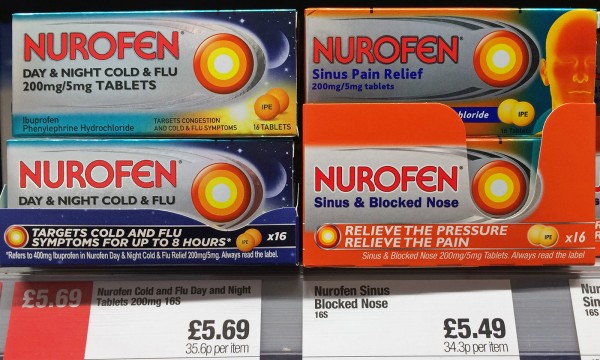 And now the UK Advertising Standards Authority is investigating the company over whether its adverts for Nurofen Express are misleading by stating that the product ‘gives you faster headache relief than standard paracetamol or ibuprofen’. Also it is investigating the company’s claim that its products directly target muscles in the head. Both Nurofen Migraine Pain and Nurofen Tension Headache claim on the front of the box to provide ‘targeted rapid relief’.
And now the UK Advertising Standards Authority is investigating the company over whether its adverts for Nurofen Express are misleading by stating that the product ‘gives you faster headache relief than standard paracetamol or ibuprofen’. Also it is investigating the company’s claim that its products directly target muscles in the head. Both Nurofen Migraine Pain and Nurofen Tension Headache claim on the front of the box to provide ‘targeted rapid relief’.
The company adopts similar practices in its combined pain-killer and decongestant drugs for relieving cold symptoms. For example, its Nurofen Cold and Flu Relief, Nurofen Day and Night Cold and Flu, Nurofen Sinus and Blocked Nose and Nurofen Sinus Pain Relief all contain the same quantities of ibuprofen and the decongestant phenylephrine hydrochloride, but each claims to do something different.
So there are various issues here. The first is whether excessive profits are made by charging a price typically 3 to 4 times greater than the identical generic version of the drug; the second is whether the company deliberately misleads consumers by claiming that a particular version of the drug targets a particular type of pain; the third is whether ‘faster acting’ versions are significantly different; the fourth is whether price discrimination is being practised.
Articles
Nurofen maker Reckitt Benckiser suffers advertising headaches Financial Times, Robert Cookson and Scheherazade Daneshkhu (15/12/15)
Nurofen Express advertising claims probed by UK watchdog BBC News (15/12/15)
ASA probing ‘misleading’ painkiller claims in advert by drug firm behind Nurofen The Telegraph, Tom Morgan and agency (15/12/15)
The great painkiller con: Top drug brands accused of huge mark-ups and misleading claims Mail Online, Sean Poulter and John Naish (16/12/15)
Nurofen Under Investigation By UK Watchdog Over Claims Advert ‘Misled’ Customers Huffington Post, Natasha Hinde (15/12/15)
Australian Competition & Consumer Comission media release
Court finds Nurofen made misleading Specific Pain claims ACCC (14/12/15)
Questions
- Is price discrimination always against the consumer’s interests?
- What form of price discrimination is being practised in the case of Nurofen?
- How, do you think, does Reckitt Benckiser decide the prices it charges retailers for its pain killers and how, do you think, do retailers determine the price they charge consumers for them?
- Is it a reasonable assumption that branded products in most cases are better than own-brand or generic versions? How is behavioural theory relevant here?
- If Reckitt Benckiser were banned from using the word ‘targets’ when referring to one of its product’s effect on particular type of pain, could the company instead use the words ‘suitable for’ relieving a particular type of pain and thereby avoid misleading consumers?
- What is the best way of improving consumer knowledge about particular types of over-the-counter drugs and their effects on the body?
- Comment on the following statement by Dr Aomesh Bhatt, the company’s medical affairs director: ‘The Nurofen specific-pain range was launched with an intention to help consumers navigate their pain relief options, particularly within the grocery environment where there is no healthcare professional to assist decision making.’
 A number of famous Business Schools in the UK and US such as MIT Sloan, NYU Stern and Imperial College have launched new programmes in business analytics. These courses have been nicknamed ‘Big Data finishing school’. Why might qualifications in this area be highly valued by firms?
A number of famous Business Schools in the UK and US such as MIT Sloan, NYU Stern and Imperial College have launched new programmes in business analytics. These courses have been nicknamed ‘Big Data finishing school’. Why might qualifications in this area be highly valued by firms?  How could a firm go about predicting how much each of its customers is willing to pay? Traditionally smaller sellers might try to ‘size up’ a customer through individual observation and negotiation. The clothes people wear, the cars they drive and their ethnicity/nationality might indicate something about their income. Second-hand car dealers and stall-holders often haggle with customers in an attempt to personalise pricing. The starting point of these negotiations will often be influenced by the visual observations made by the seller.
How could a firm go about predicting how much each of its customers is willing to pay? Traditionally smaller sellers might try to ‘size up’ a customer through individual observation and negotiation. The clothes people wear, the cars they drive and their ethnicity/nationality might indicate something about their income. Second-hand car dealers and stall-holders often haggle with customers in an attempt to personalise pricing. The starting point of these negotiations will often be influenced by the visual observations made by the seller.






